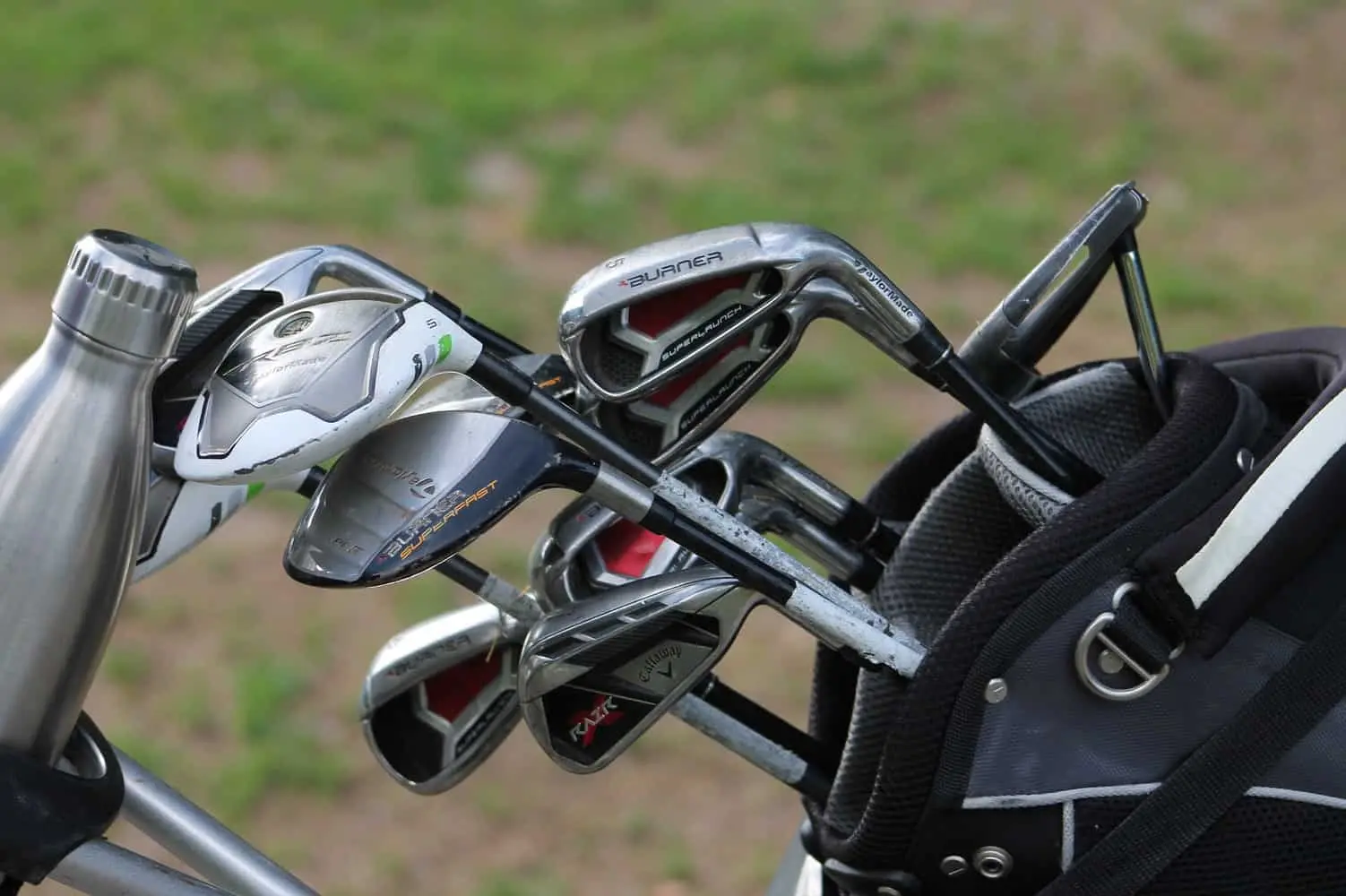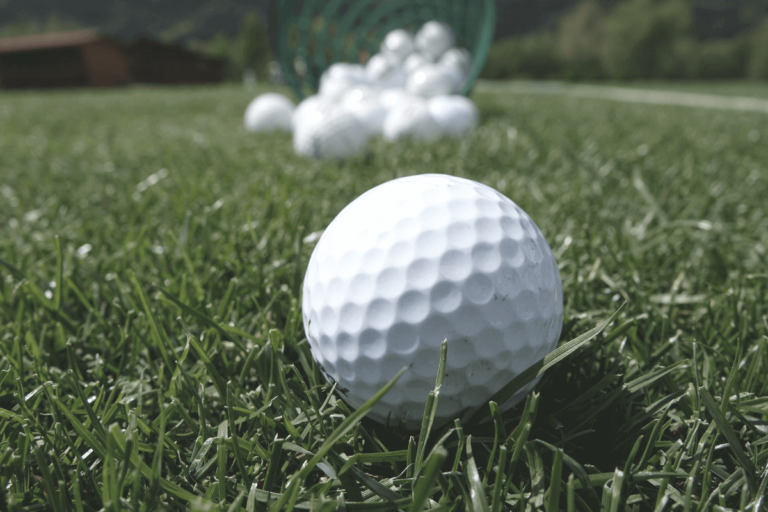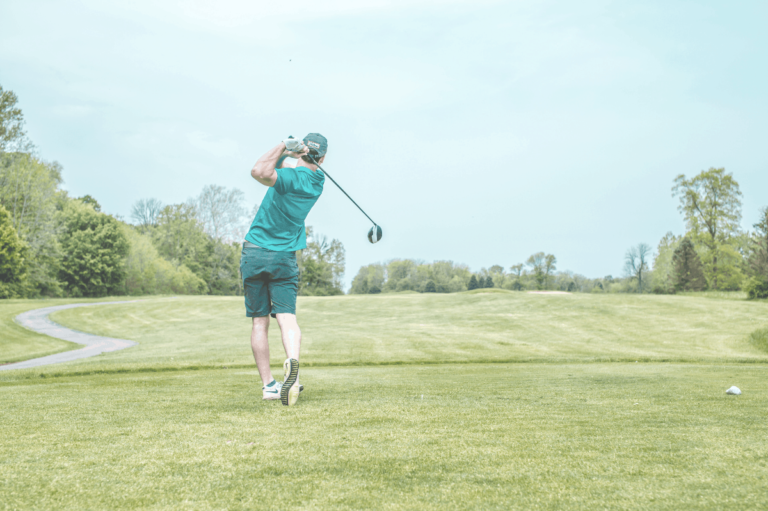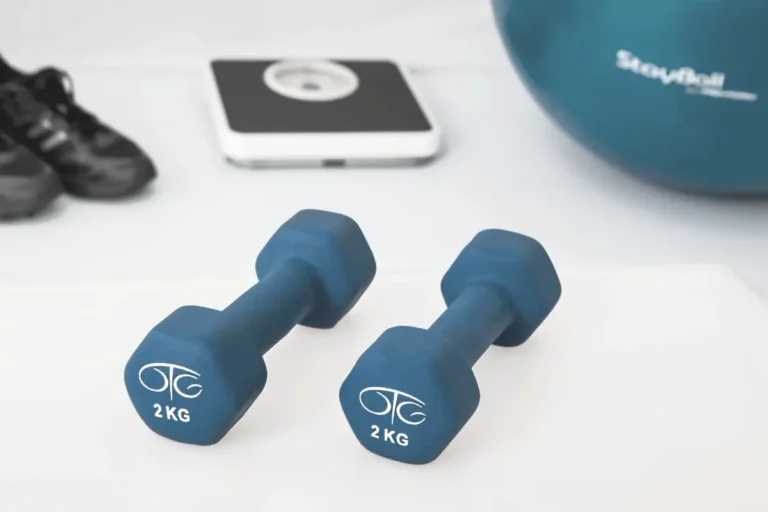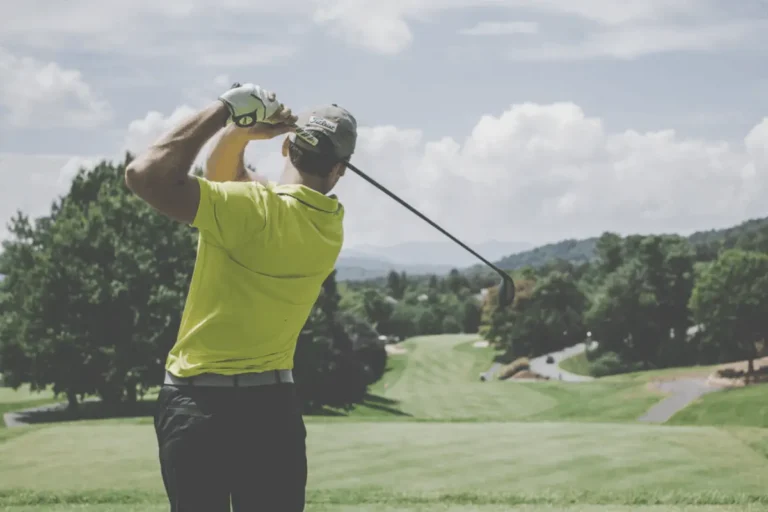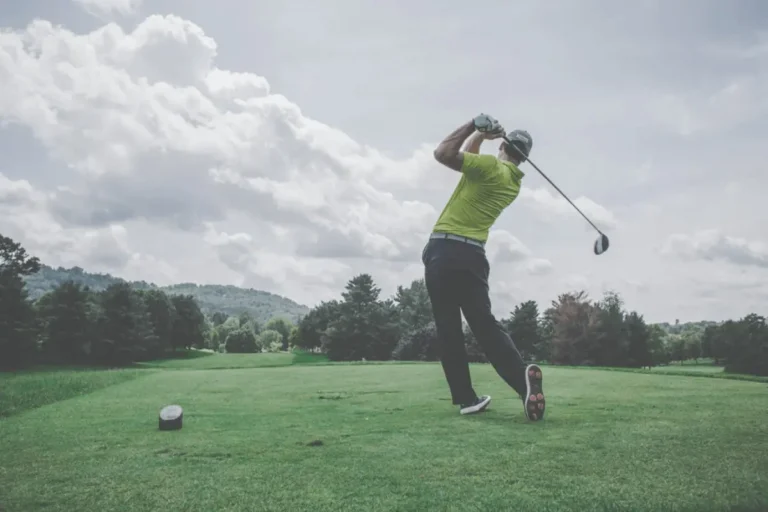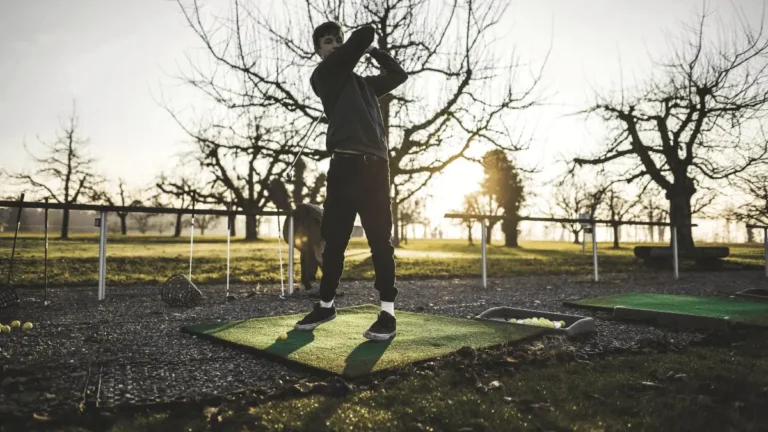How To Choose And Clean Golf Clubs
Golf is a great way to relax on the weekends, or it can be an exercise in frustration. One of the easiest ways to make sure you enjoy it is by knowing how to choose and clean your golf clubs.
If you don’t know how to choose and clean your clubs, this can affect your enjoyment of the sport and your reputation among the other golfers on the course. Since golf is such a social sport, make sure you preserve your game and your on-course friendships with our helpful advice.
Read on to find out:
- How to choose and clean your golf clubs
- Golf club basics
- More about custom golf clubs
- Figuring out the right flex for you
- Caring for your club heads with proper maintenance
- Keeping the shafts in good condition
Understanding the Basics of Golf Clubs
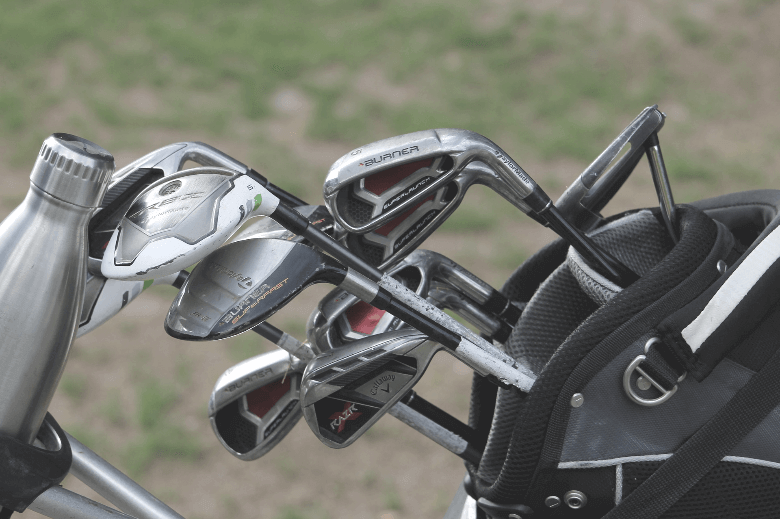
What to Understand First
like a tennis racket or baseball bat, golf clubs are used to strike the ball. Even though a club is the only piece of equipment needed to play golf (except for the ball), there is a wide variety of clubs.
Each is designed to fit specific situations and for a unique purpose. Read on to learn about the standard clubs in every golfer’s bag.
The Clubs Every Golfer Carries in Their Golf Bag
Every golfer you’ll meet on the course has a common club set including woods (the 1 wood is also called a driver), irons, wedges, and putters. Recently, many players have also started carrying hybrids. Some confident golfers, or economic golfers, use hybrid clubs to replace some of their woods and irons.
How Many Clubs are Allowed?
The United States Golf Association (USGA) limits on the number of clubs that you (or your caddy) can carry during a golf round. The maximum is 14. But there are no limits, only recommendations, on the number of each type you can carry.
Usually, a golfer carries three woods (a driver, a 3, and a 5-wood, eight irons (including wedges), and a putter. This only adds up to 12 clubs, so there’s still leeway to personalize your club set.
There are no rules about adding clubs to your bag during your game, as long as you do not exceed 14 clubs.
Don’t try to skirt this rule by asking your caddie or a friend to carry extra clubs for you. This is still forbidden.
Can You Borrow or Share Clubs With Your Golf Partner?
According to the 2019 rules of golf, sharing or borrowing clubs is against the rules. You may share your golf bag with your partner, but your clubs must be clearly marked and you can’t switch clubs during the game.
Penalties
The USGA assigns a two-stroke penalty for each extra club in your bag. The penalty applies to each hole you played with the extra club in your bag! Luckily, the maximum penalty is four strokes per hole but it’s still a crippling penalty.
You must remove an extra club from play as soon as you notice it. Either give it to an observer or turn it upside-down in your bag. The penalty is then applied to the holes you played before you noticed the club. If you’re in the middle of a hole, the penalty applies to the current hole.
In match play, you deduct a hole for each penalty, up to a maximum of two holes per round.
Extra Clubs in Your Bag
As we mentioned earlier, you can add two extra clubs to the standard set of 12. A golfer might decide to bring a hybrid club and a wedge. Or two extra wedges if he or she is expecting a variety of particularly difficult lies.
Explaining Golf Club Numbers
Golf clubs are chosen for distance and loft. The loft is the ball’s rise or altitude when struck. Determined by the clubface’s angle, a loft is necessary to clear trees, terrain, and other obstacles. The number on the club refers to the loft. Higher numbers state greater loft. Of course, higher lofts sacrifice distance.
Anticipating Stroke Distances by Golf Club Type and Number
Your woods, and most importantly your driver, hit the ball farther than your other clubs. They will also have the shallowest loft.
Your irons increase the loft and decrease the distance as you continue down the fairway into rolling terrain.
Wedges have the highest loft and the shortest distance (excepting putters) and are used in specific situations to get your ball out of difficult lies.
So, for example, your 1-wood (driver) offers the greatest distance on your stroke. This is why you always start with this club, from a flat surface, and using a tee. As the wood numbers increase, the distance decreases but you gain some loft in exchange.
Your 3-iron offers reasonable distance, although shorter than the woods. As the iron numbers increase, you gain much more loft to clear trees and hills, until you get to the 9-iron and your wedges. These are used to clear tall, nearby obstacles or get the ball out of sand traps.
The Different Types of Golf Clubs

All this talk of 3-woods, 9-irons, wedges, and hybrids might be confusing to a beginner. In this section, we unpack the differences between club types.
Woods
Your woods are the first clubs you will take out of your bag on each hole. The 1-wood (known as the driver) is the very first club in your hand.
Woods differ from the other clubs with their wider and heavier wooden heads. Sometimes, the heads are hollow-bodied metal. They also usually have longer shafts, typically made from graphite composite. The long shafts and heavy heads ensure swings impart the most kinetic energy to the ball.
The woods also have the least amount of loft. This is due to the directly forward-facing impact angle on the clubface. For these reasons, woods are best used from the tee and early in the fairway. Woods allow you to quickly close the distance to the hole.
Fairway woods have higher numbers than the driver. Use fairway woods at the tee on shorter holes to give you more control over your drive. Or, as the name suggests, on the fairway when the distance is still too great to cover with an iron. Fairway woods have a loft between 12 and 20 degrees.
Golfers generally use woods when the distance to the green is 175 yards or greater. Traditionally, professional golfers preferred woods with minimal loft. But in recent years, they have been choosing loft angles of 10 to 12 degrees, or even higher, for their drives. Additional loft increases airtime and so overall distance.
The most popular fairway woods are the 3 and 5. The 2 and 4-woods have fallen out of use. Now, many golfers choose to include much higher wood numbers in their bags instead. These 7, 9, and 11-woods are called utility woods.
A final feature of the woods is commonly referred to as the sweet spot. The sweet spot is the area of the clubface that will provide a good, well-controlled hit. Woods have a larger sweet spot than the other club types because of the large, flat faces and perimeter weighting.
Hybrids
Hybrid clubs, sometimes called utility clubs, are a new addition to the game of golf. Combining features from woods and irons, hybrids are multi-purpose clubs and save on extra weight in the golf bag.
These clubs have many strengths. Golfers find hybrids offer greater swing control than irons in similar situations. They also offer more control over stroke direction.
Hybrids give more lift to the ball than woods. But they still have a wide face which means a greater chance of a center-face hit than irons provide.
Some golfers choose hybrid clubs to replace all their lower-numbered irons and some of their fairway woods. This is especially appealing to newer golfers who don’t want to carry all 14 clubs. Or make tough decisions between them on each stroke. The larger surface area on the face is a bonus strength. For new golfers, it provides a more solid and consistent surface contact with the ball.
But hybrids aren’t for everyone yet. We recommend you try them out for several games before using them to replace your typical golf club set.
Irons
Once you’re off the tee and walking through the uneven fairway, this is when you’ll want to pull out your irons. Irons are distinguishable from other clubs by their smaller, metalheads and sloped faces. Irons usually have shorter shafts for more maneuverability in space-constricted shots.
The shorter shafts also decrease the arc of the swing, which results in much shorter strokes.
Despite offering less overall distance than woods, irons are popular during gameplay because of their versatility. The shorter shaft and narrow heads can attack the ball no matter where it lies. The pitch of the head and the grooves on the face can get the ball out of any situation. Generally, these clubs are more accurate than the others in your bag.
Rather than a solid metal head, irons usually have a cavity carved out of the upper-back part of the head. This reduces weight and gives the golfer more control.
Wedges
Wedges are at the highest end of the iron clubs. Their lofts range between 46 to 64 degrees. Use wedges to lift the ball high out of sand traps and bunkers. But be aware you will sacrifice a lot of distance.
This extreme angle also creates a unique feature for wedges known as bounce. When striking sand, turf, or other rough terrains, the low pitch of the iron face on the wedge doesn’t get stuck in the ground. Instead, it has a tendency to glide over it with a little bounce after contacting the ball.
This feature is what makes wedges perfect for getting the ball out of troublesome territory.
There are four types of wedges. The most used is the sand wedge. This club is most often used to scoop the ball out of sand traps.
The lob wedge is similar to the sand wedge, but experienced golfers may use it to add spin to the ball. This is particularly useful in getting the ball around obstacles and onto the greens.
The gap wedge is for awkward distances that are too long for your other wedges or too tricky for your irons. This club has a maximum range of about 110 yards.
Finally, the pitching wedge (often called the 10-iron) is sold with an iron set. It’s the iron with the highest number and gives the highest loft on the stroke.
Putters
Finally, the last club you will use on each hole (and arguably the most important) is the putter. Anyone who has gone to a miniature golf course has held one of these clubs.
Putters are designed to give golfers optimal control on the ball. And to keep it rolling on the green’s firm, flat surfaces. They do not impart any loft or bounce to the ball.
There are two types of putters: blade and mallet. Blade putters have smaller heads and are preferred by professionals. Mallet putters have large, heavy heads. These putters offer more stability for beginners and can also create more roll instead of skid. A rolling golf ball is easier to control on its way into the hole.
Choosing the Right Golf Clubs
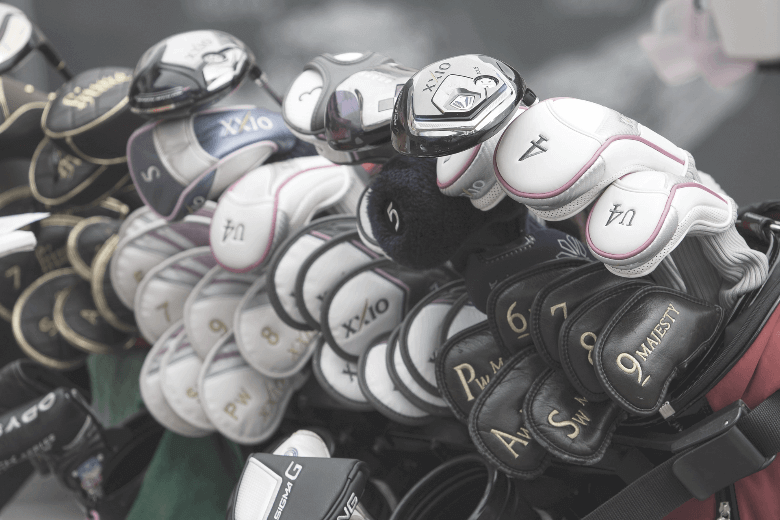
Choosing the right golf clubs is one of the most important factors contributing to a solid golf game. Although it runs contrary to common sense and popular opinion, having specialized and customized equipment is perhaps even more important for beginners and amateurs than it is for experts!
Here we present some indispensable advice on how to choose your golf clubs including sizing and measuring and selecting the right grip. We’ve also collated some pro-level advice on choosing clubs.
How to Measure for Custom Clubs
When you choose your clubs, you first need to measure your height. You will need a recent measurement and for accuracy, let someone else take the measurement for you. Measure your height from head to foot while wearing shoes and standing straight (not in a golf stance).
Next, measure your wrist-floor length. Once again wearing your golfing shoes and standing straight and tall, ask someone to measure from the top of your wrist (where your club should extend from) to the floor.
The store where you choose your clubs can use these two measurements to determine a plus-or-minus change based on the standard golf iron length of 39 inches. If you want to double-check your sales assistant’s recommendations, you can use this standardized information:
- 6 feet 9 inches – 7 feet 0 inches: Add 2 inches
- 6 feet 6 inches – 6 feet 9 inches: Add 1 1/2 inches
- 6 feet 3 inches – 6 feet 6 inches: Add 1 inch
- 6 feet 0 inches – 6 feet 3 inches: Add ½ inch
- 5 feet 9 inches – 6 feet 0 inches: Standard Length
- 5 feet 6 inches – 5 feet 9 inches: Subtract 1/2 inch
- 5 feet 3 inches – 5 feet 6 inches: Subtract 1 inch
- 5 feet 0 inches – 5 feet 3 inches: Subtract 1 1/2 inches
- 4 feet 9 inches – 5 feet 0 inches: Subtract 2 inches
The store will also use your measurements to figure out your lie angle. Lie angle refers to the angle between the shaft and the ground line when you are posed to swing, with the center of the club sole just touching the ground. This angle is important when it comes to optimizing the club’s ground interaction. Ideally, you want the closest swing without actual ground impact.
Of course, no self-respecting sales assistant will help you choose clubs without asking you to take a few practice swings in the store. If you’ve already played a few rounds with another set of clubs, you should bring those with you to the store.
You may have developed swing habits with this set and the assistant can make corrective adjustments to your clubs rather than basing the fit solely on your height.
Taking in-store practice swings also shows the sales assistant if you’ve developed any form habits, such as dipping from the knees during your swing. If so, he or she can spot those habits and choose a shorter club to compensate.
It’s also quite beneficial if you tell the store your handicap or at least offer up a basic description of your experience and skill level. As we mentioned before, custom clubs can make a bigger difference for beginners and the same hold true for golfers with a high handicap.
While custom clubs might only take a stroke off a professional’s game, they can seriously improve an amateur’s par score. Custom clubs might be just what you need to get the ball rolling.
Determining the Right Flex
Choosing the most helpful flex and grip for your clubs is somewhat more technical than measuring the proper size. You probably can’t conduct a complete analysis at the golf club store. In fact, you might want to visit some driving ranges and even use diagnostic equipment to help you choose your clubs.
First, you will need to measure your swing speed. Many high-end pro shops have a radar machine or an electric launch monitor that can determine your swing speed. Depending on your experience, your swing speed will probably fall between 80 and 85 miles per hour.
Generally, stiff shafts for woods and irons are helpful and comfortable for golfers with faster swings. If your swing is more casual, then you may prefer graphite shafts for the greater flex this material offers.
Choosing Wood Flex
The simplest way to choose your wood flex is at the driving range. Keep track of your drives and take an average drive length to choose the optimal flex. Consult these guidelines after finding out your average measurement:
- Less than 180 yards – ladies flex
- Between 181 and 200 yards – senior flex
- Between 200 and 235 yards – regular flex
- From 236 to 275 yards – stiff flex
- Further than 275 yards – extra-stiff flex
Choosing Iron Flex
Choosing the proper flex for your iron clubs is slightly more complicated. You should visit a driving range with a clearly posted 150-yard marker. Take a full set of irons and practice with each club to see which reaches 150 yards most consistently. Use the guidelines below to choose your optimal iron flex after several swings with each club.
Which iron consistently resulted in a 150-yard drive?
- 4 or 5 – ladies flex
- 5 iron – senior flex
- 6 iron – soft regular flex
- 7 iron – regular flex
- 7 or 8 iron – firm flex
- 8 iron – stiff flex
- 9 iron – extra stiff flex
You’ll notice there’s some overlap between the categories here. Use your best judgment and feel free to account for your own personal flex preferences slightly.
Golfing with Gloves
If you normally wear gloves while golfing, you should conduct all of these aforementioned tests while wearing gloves to make sure the gloves and clubs work together for your best swing.
If you don’t wear gloves, you might want to consider starting, especially if you plan to make golfing a regular habit. Like any regular physical activity or sport, golfing can wear on your body. Gloves are the best protective gear in golf, they keep your hands comfortable and help you avoid blisters and tendon issues.
We’re sure you’ve worn gloves before, but here are a few tips for how to choose a proper golf glove.
Make sure your glove doesn’t form any creases or wrinkles as you constrict and flex your hand. You want the glove to barely add any noticeable space between your hand and the club grip. A poorly-fitting glove will lead to blisters or slippage, which can disrupt your swing.
You should have just a small pinch of excess material at the fingertips. You should not be able to pinch the glove in the palm while wearing it.
Once you have chosen the best-fitting gloves, you can use your glove size to choose your club grip. The larger your glove, the larger your grip.
Professional Tips for Choosing Clubs
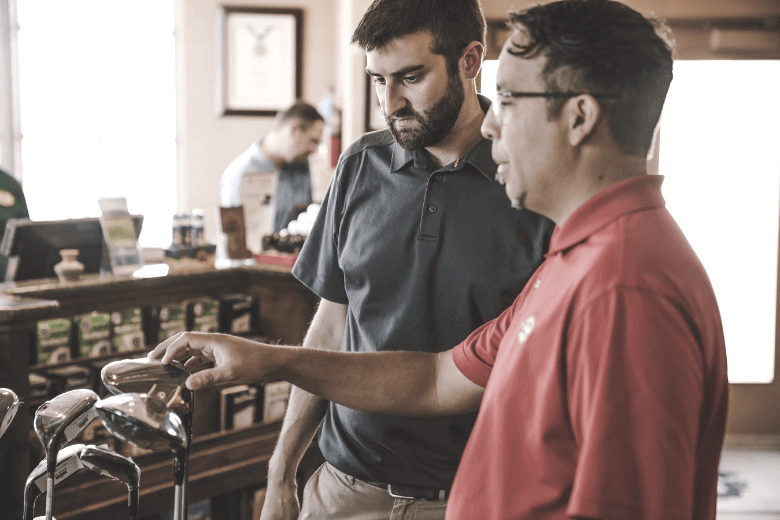
While we stand by the advice in this column, nothing beats the personal and professional help of your shop’s local golf pros. A golf pro can give you the attention and specific advice that you need to choose the perfect clubs for your game.
You should also try out a wide variety of clubs rather than going with the first set that feels comfortable. As you practice with different clubs, your technique will also gradually change and improve. You don’t want to be stuck with the clubs that matched your inexperience. Take your time, play a lot of rounds, and then you can finally choose the best set of custom clubs for your game.
One of the most individually unique aspects of a golfer’s swing is the loft that he or she puts on the ball. Loft is a measure of how high the ball rises during its arc and travel. It’s usually a good idea to visually evaluate your loft before you choose golf clubs so you find clubs that maximize your swing. After all, too much loft is wasted travel and too little will reduce distance.
Hybrid Clubs
If you want to economize on your club collection, consider getting hybrid clubs. Combining features from both woods and irons, hybrids are becoming more popular among casual golfers. These clubs can be suitable for a variety of ball lays and distances.
Hybrid clubs tend to have shallower heads than a standard wood club and the center of gravity is lower and further back for greater control. But like an iron, the clubface can be angled for more rise. The hybrid clubface is made from innovative new alloys that combine the bounce of wood with the control of iron.
Hybrids are starting to phase out lower iron numbers as more golfers begin to prefer their performance and versatility. Hybrids are definitely a useful addition to your second-stroke game. Golfers choose hybrid clubs because:
- More weight increases the impact force and slows the swing
- Sharper front edges to dig into the roughs
- Better club control for more accuracy
- Larger “sweet spot” or impact area
Personal Preference
At the end of the decision-making process, you need to choose the club that’s most comfortable in your hands. No article or golf pro advice will take the place of practice and personal preference. Take your time, try out a variety of options, and choose the clubs that help you enjoy the game.
Cleaning and Caring For Your Golf Clubs
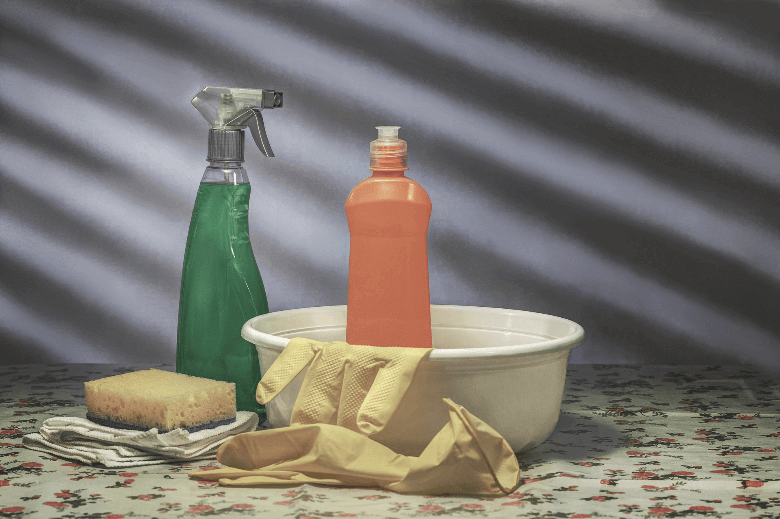
Golf is a social activity, and nothing will reduce your reputation and prestige among your golfing buddies than showing up on the course with filthy, poorly-maintained clubs. It communicates to your friends that you don’t care about the game, and by association, you may not care about the time you spend with them.
Whether you are golfing with friends or business associates, send the right message by playing with clean and well-tended clubs. After all, the way you care for your clubs is a reflection on you, and how much effort you put into your relationships and work.
How to Clean the Heads
Before you start cleaning, prepare for the task with the following items:
- A bucket of warm water
- Dishwashing liquid or mild soap
- A cloth or wet rag for cleaning and a dry towel
- A soft-bristle brush. A used toothbrush also works well
- Chrome or steel polish
- Wood wax
Cleaning Woods
Cleaning your wood clubs is a simple task. Wipe them down thoroughly with a wet rag and soapy water and then dry them immediately afterward. Never soak wood heads or scrub with a brush.
If you have wood wax, apply it with a dry rag or towel after washing the head.
Cleaning Metal Woods
Metal woods are slightly more durable than simple woods. Although you still should not submerge these heads in water, you can scrub the faceplate with a soft-bristled brush to clean the grooves.
Cleaning Irons
Since your irons are the most durable, and also usually get the roughest treatment on the course, they need the most thorough cleaning.
- Mix a few capfuls of mild detergent in a bucket of warm water (not boiling hot, this can damage the ferrule)
- Soak the iron heads in the bucket for 5 to 10 minutes
- Remove the clubs, one at a time, and scrub them with your soft-bristled brush
- Make sure you remove the dirt from each nook and cranny—mud can accumulate, damage the club and ultimately affect your swing
- Rinse the soap from the clubhead with clean water
- Dry the club to prevent rusting
- If you want a professional, shiny appearance, rub some chrome polish on the head with a dry rag using small circular motions
- Leave the polish on the club for about five minutes and then remove it with a clean, dry towel. Leftover oils can accumulate dust and dirt
Head Covers
Woods especially are vulnerable to the elements when left exposed, so keep them covered with soft covers when you aren’t using them.
Your irons don’t necessarily need covers, but if you want to keep that polished shine, covers will do the trick.
Don’t forget to occasionally turn the covers inside-out and launder them because they can trap dirt and moisture inside with the clubhead.
Maintenance on Club Shafts
If your clubs have steel shafts, they are durable and can handle any kind of cleaning. Wipe dirt and oil away with a wet cloth and scrub with a brush in any difficult spots. If you see rust spots, clean these with a mixture of vinegar and water.
Graphite shafts have a delicate polyurethane coating, which you need to be more careful with. Use a wet rag on these shafts with soapy water if necessary. Never use solvents as these can damage the coating. After cleaning, polish the shafts with wax for added protection against dirt and oils.
If your graphite shafts have dents or deep abrasions, they need to be replaced. The shafts are designed for durability but these signs of damage indicate that they are near failure. Continuing to use these clubs can result in breakage during a swing, which can be dangerous to the golfer and his group.
How to Maintain the Grips
As far as clean clubs can affect your golf performance, clean grips are perhaps the most important part of the job. Sweat, sunscreen, grease, and dirt can all invade the grips, leaving them slippery or loose. This can seriously impact your swing.
Every time you replace a club in your bag, you should take the opportunity to wipe down the grip with a clean, dry towel. After you finish the round with your friends, you should wipe the grips with warm water and dry them to cut back on the sweat and oils from your hands from accumulating too quickly.
Even with regular care, you will need to periodically clean your grips thoroughly. Using warm water and hand soap, scrub the grips with a soft-bristled brush (so you won’t tear or scar the leather, rubber, or textile grip). Be careful to avoid hot water, which can dissolve the glue and loosen the grips.
Afterward, rinse quickly with cold water and dry thoroughly. If you can, leave the grips in the sun and fresh air to evaporate any water that might be trapped against the metal shaft. You don’t want the shaft to develop unseen rust spots.
Conduct this cleaning process at least once a month or whenever your hands show black marks or residue from the grips.
If you have rubber grips, you can periodically sand them with medium or coarse-grit sandpaper and then rinse the residue off with cold water. This should not only keep them clean but restore some friction and texture.
If the clubs are well used and they appear cracked or worn down, get the grips replaced. You don’t want grips that slip or detach from the shaft during a game.
Summary
We hope this article has provided you with some new ideas about how to choose and clean your golf clubs. We’re sure that armed with this new information, you’ll hit the course with more confidence, fun, and clean clubs! And if you happen to walk off the course with a lower par score, you’re on the right track.
Don’t forget to share this article with your golfing friends and family who need tips on how to choose and clean golf clubs.

